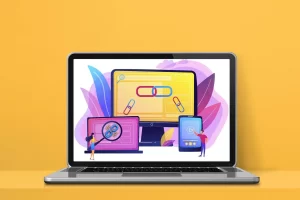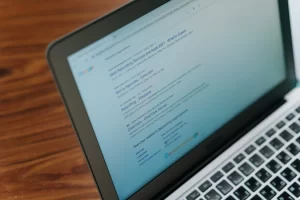Your content and blog is nothing without SEO. It’s a bold statement but a true one. What if I create relevant and fresh content, will I be seen then? Yes and no. Let’s compare.
- Website A has relevant and fresh content, but it isn’t optimised for SEO.
- Website B has relevant and fresh and is also optimised for SEO.
Which website from the two do you think Google will pick up to show in their search results?
If you said website B, you’re correct!
You want to be website B, and you can after following our tips for optimising your content and blog for SEO. Without further ado, let’s go straight to sharing the tips on how you do just that!
You Need to Plan Your Content and Blog Based on Keyword Research
Optimising your content and blog for SEO will make it easier for users and search engines to find your website. You can optimise your blog and content by performing keyword research to find keywords that can help your website increase its online visibility.
You can perform a keyword analysis to determine the type of content that will attract the interest of your target audience. You don’t want to write on topics that will not catch the attention of your target audience.
- You Need to Come Up with an Effective Title for Your Blog
Do you know the search engine’s main purpose? It is to display relevant content based on the user’s search query. Google will judge your blog’s relevancy based on its title. The readers will, as well! Therefore, the blog’s title needs to include the keyword.
We recommend including the keyword in the first sixty characters of your blog’s title because Google won’t show more than that in the search engine page results.
- You Need to Start Using Internal Linking
We want you to link at least one or more of your pages in your blog. You can link to your contact page, the home page, a service or a product, and/or to another blog. Why do we need to do this? Simple, you want your users to stay on your website.
Internal linking is an excellent way to create more engagement and allow them to navigate from one page to another page seamlessly. Another reason internal linking is king because, in the event another user shares your blog, people reading the shared blog can click on a link and get directed to your website. You just earned a visitor!
Let’s create good and high-quality content to increase its “shareability” and increase the chance of other websites and users sharing your content with their users.
- You Need to Create Easy to Read Content
Would you continue to read a blog you can’t make sense out of or would you skip it? Most of us would go with the latter option of skipping it. Do you know who else would skip it? — Google! Users and search engines look for short sentences, punctuation, smaller paragraphs, bullet-pointed, numbered lists, and headings. Moreover, you can use white space and images around the text to increase readability.
- You Need to Develop Unique Content
Ensure you don’t plagiarise any content from other sources, including your own content. You can use other blogs and content for inspiration but copying them is a no-go. You need to ensure you write and publish unique content and blog. You can check using tools to determine if your published content on your website is unique. Doing so will also tell you if you need to optimise the content on your website.
- You Need to Get Insight into Your Content Results to Determine Its Performance
Do you know how your content is performing compared to others? If you don’t, you need to use a tool to help you track data and provide you with comprehensive reports regarding your website’s traffic. The tool you use should provide you with a wide range of metrics.
These include the number of user sessions, the bounce rate, the average time a user spends on the page, conversions, and more. You can use this information to determine if your content and blog are generating the user engagement and website traffic that you require to stand out from your competitors.
- You Need to Use Social Media to Broaden Your Blog’s Reach
You need to use social media to broaden your blog’s reach. You can use social media platforms such as Facebook, Instagram, Twitter, Snapchat, Google+, and other platforms relevant to your business to increase your blog’s reach.
In addition to this, you can promote your blog and content through your social media websites to create connections and engagement with potential and existing customers. You can have a “share” button under your blog for users to share it with their followers on their social media platforms.
- You Need to Give Users the Option to Subscribe to Your Blog
You need to add RSS or Feed Subscription Buttons and give your users the ability to subscribe to your blogs via email. If a user finds your content “read-worthy,” they will subscribe to it to receive instant notifications whenever you post a new blog on your website. They might turn on the notification button on your social media platforms to notify them whenever you share your blog or something else.
- You Need to Optimise the Images in the Content and Blog
You should add images to your content and blog for visual appeal. If you are adding images to your content and blog, you need to optimise them for SEO. We want you to add keywords in the file name and fill out the alternate text field with a rich description filled with keywords of the picture.
Who Can Help You Optimise Your Content and Blog for SEO?
TopRankings can! You can contact us to learn more about our SEO copywriting service. We can help you get your blog and content back on track by optimising it for SEO.



